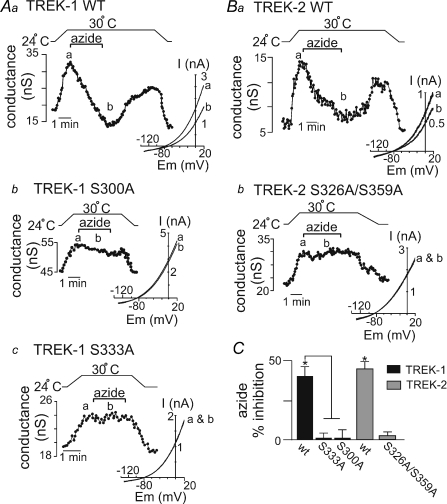Figure 4. Inhibition of TREK channels by sodium azide require AMPK phosphorylation sites.
Whole cell currents were recorded from HEK cells transfected with wild-type or AICAR-resistant mutant TREK-1 (S333A, S300A) or TREK-2 (S326A/S359A) channels during exposure to metabolic stress in the form of sodium azide. Aa, trace of wild-type TREK-1 conductance and bath temperature show that heating from 24°C to 30°C increases TREK-1 activity. At 30°C bath application of sodium azide (10 μm) caused a rapid and reversible inhibition of TREK-1 conductance. Inset, I–V plots of TREK-1 current obtained at 30°C during control conditions (a) and in the presence of azide (b). Ab and Ac, bath temperature (top) and whole cell conductance from S300A (Ab) and S333A (Ac) mutant TREK-1 channels show that heating from 24°C to 30°C increases whole cell conductance of cells expressing either mutant channel. At 30°C bath application of sodium azide (10 μm) had no effect on S300A (Ab) or S333A (Ac) conductance. Inset, I–V relationships of S300A and S333A mutant TREK-1 channels obtained at 30°C during control conditions (a) and in the presence of azide (b). Ba, trace of wild-type TREK-2 conductance and bath temperature show that heating from 24°C to 30°C increases TREK-2 activity. At 30°C exposure to sodium azide (10 μm) caused a rapid and reversible inhibition of TREK-2 conductance. Inset, I–V plots of TREK-2 current obtained at 30°C during control conditions (a) and in the presence of azide (b). Bb, bath temperature (top) and conductance trace from a cell expressing the TREK-2 S326A/S359A mutant channel (bottom) show that the mutant channel is activated by warming but exposure to sodium azide (10 μm) at 30°C had no effect on conductance. Inset, I–V relationships of TREK-2 S326A/S359A mutant obtained at 30°C during control conditions (a) and in the presence of azide (b). C, average data summarize the effects of sodium azide on wild-type (n= 6) and mutant TREK-1 channels (S333A, n= 6; S300A, n= 3) as well as wild-type (n= 3) and S326A/S359A mutant (n= 4) TREK-2 channels.

